Never Summer Ripsaw 2020 Review
The Never Summer Ripsaw is an all mountain twin board, that isn’t my cup of tea, but has a few super nice features when you ride it.
[tabs type=”tabs”]
[tab title=”Description” active=”true”]
Features of the Never Summer Ripsaw
Ripsaw Rocker Camber
More aggressive than the Original Rocker Camber profile, the Ripsaw version has a smaller rocker section between your feet, and longer (and more pronounced) camber sections under and outside your feet.
Carbon VXR Laminate Technology
These are carbon fiber V shapes that extend out from under your feet, out towards the nose and tail of the board at the end of the effective edge. They are there to help transfer energy out to the edges of the board, making the nose and tail of the board more torsionally stiff while keeping the middle of the board softer.
Coextruded Polymer Topsheet
A tough topsheet material, that helps resist scratches from the lift line, and give a bit more grip to the bottom of your boot.
Extended Transition Area
Power Grip Sidecut
The sidecut of the board is made up of a whole bunch of different radius circles, that add extra contact points for extra edge hold.
Low Profile Nose/Tail
STS Pre-tensioned Fiberglass
A pre-hardened, pre-tensioned laminate that has elastomer stringers, which help the glass laminates bond together.
+/- 45 Fiberglass Laminate
Bi-Lite Fiberglass
A lighter option than STS fiberglass.
NS SuperLight Wood Core
Made up of a mix between light and durable wood that keeps the cores strong enough to handle big impacts, without being too heavy.
RDS 2 Damping System
There are three narrower laminated layers that are there to help absorb vibrations, help with impacts and keep the board feeling stable.
Elastomeric Underfoot Stabilizers
Added to help absorb impacts under your feet, as well as reducing foot fatigue.
Sintered P-Tex Sidewall
Rather than regular ABS sidewalls, these are chosen so that they can handle colder temperatures without the risk of cracking.
Durasurf Sintered 4501 Base
A sintered base materials, that soaks up wax well and keeps the board moving quickly.
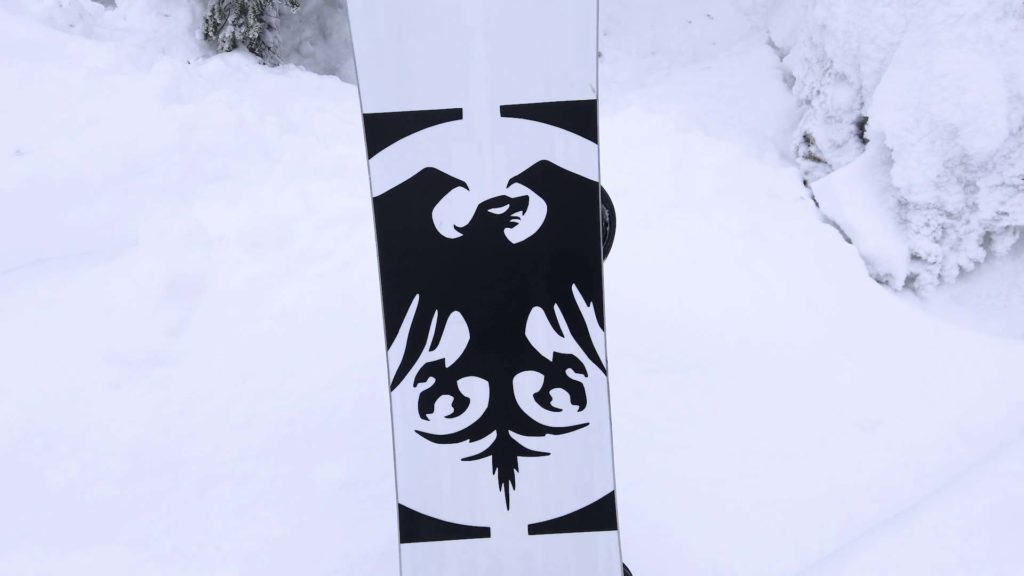
P-Tex Tip/Tail Protection
Sizes available:
- 153cm
- 156cm
- 159cm
- 162cm
- 157cm Wide
- 160cm Wide
- 163cm Wide
How it Rides
Board size: 157 Wide (X)
Boots: Salomon Launch 27.5/US 9.5
Bindings: Flux TT (Medium)
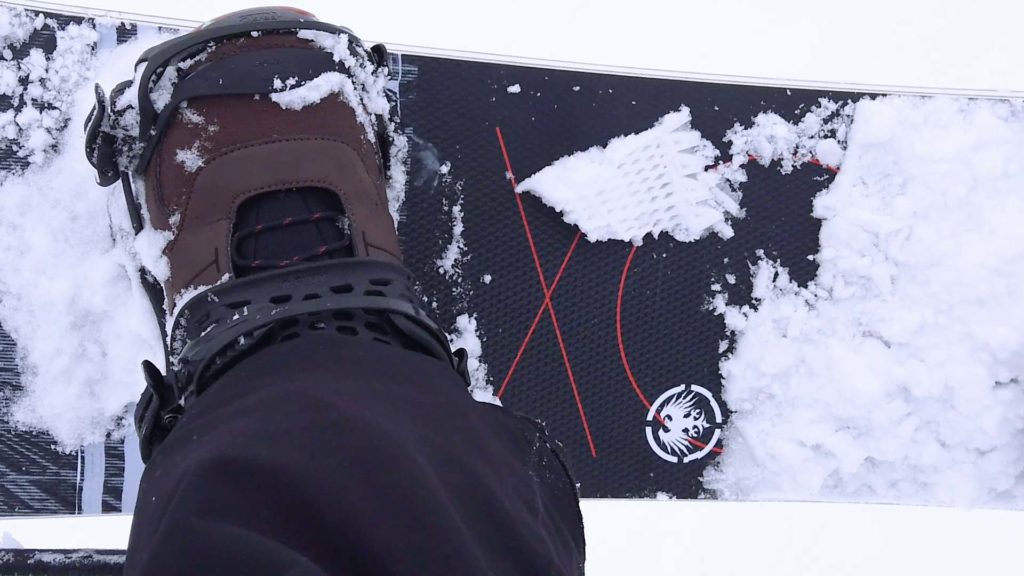
This review is based on me riding the 157cm Wide 2020 model, on fairly soft groomers, and in soft chopped up snow in the trees. Although I don’t technically need a wide (or X model) board for size 9.5 boots, for a wide it isn’t very wide anyway, and the little bit of extra width can help push turns over a little more. I was riding with my standard angles, which are +12 on my front foot and -9 on my back.
Hybrid boards – and by that I mean boards with rocker between your feet (Never Summer/Lib Tech or GNU BTX/C2) are never my first choice, they just aren’t what I like to ride at all. With that being said, I still like to look for all the positives they have, and I still regularly try them, just in case one day my tastes change.
Camber Profile
This has the more more aggressive profile than the Original Rocker Camber boards, which means it has less rocker, and bigger camber sections. When you stand on the board, the second you shift your weight away from being centered, you can feel the board fighting to push itself up. Leaning back slightly you will feel the nose trying to push itself up.
If you ride with a flat base, it is super stable, and has no catchy feeling, it makes it really easy.
Flex and Pop
The Ripsaw has a medium stiff flex, though it has a very different feel if you compare it to a medium stiff camber board. Because the middle of the board (between your feet) is pre-flexed, it doesn’t really feel as stiff as it says it is. Though if you push hard on the nose and tail, the stiffer flex is a bit more obvious.
Pop on boards like this is never good, and it takes much more work than normal to get anything out of the board. You have to change the way you ollie quite a lot, and push your weight all the way back to start to flex past the rocker point between your feet, so you can actually flex the tail.
Even doing all that, it seems like I have to put in a ton of work to get a tiny result.
Edge Hold
Edge hold on Never Summer boards (no matter if it has Original/Ripsaw/Fusion profiles) are great, which must be a combination with the profile, and the Vario sidecut. The combination of different radius circles combined with the flat section give it crazy grip, even in very hardpacked snow.
Starting a turn is smooth and easy, and through the rest of the turn the board never feels like it even has a chance of slipping out. It might be due to me not keeping my weight perfectly centered, but during the end of a heelside turn, I definitely noticed that I could feel a ton of grip, especially under my back foot, something that I could really rely on.
Once I was used to how the board turned, it became a lot of fun just sticking on groomed runs carving as hard as I could. It leaves a solid track in the snow, and it’s nice being able to look back and see very neat “S” shapes running back up the hill.
Float
I was able to ride the Ripsaw though some soft snow, and the float for a twin board was not bad. One of the good features of having rocker between your feet means that you only have to lean back the tiniest bit, for it to bring the whole front of the board up.
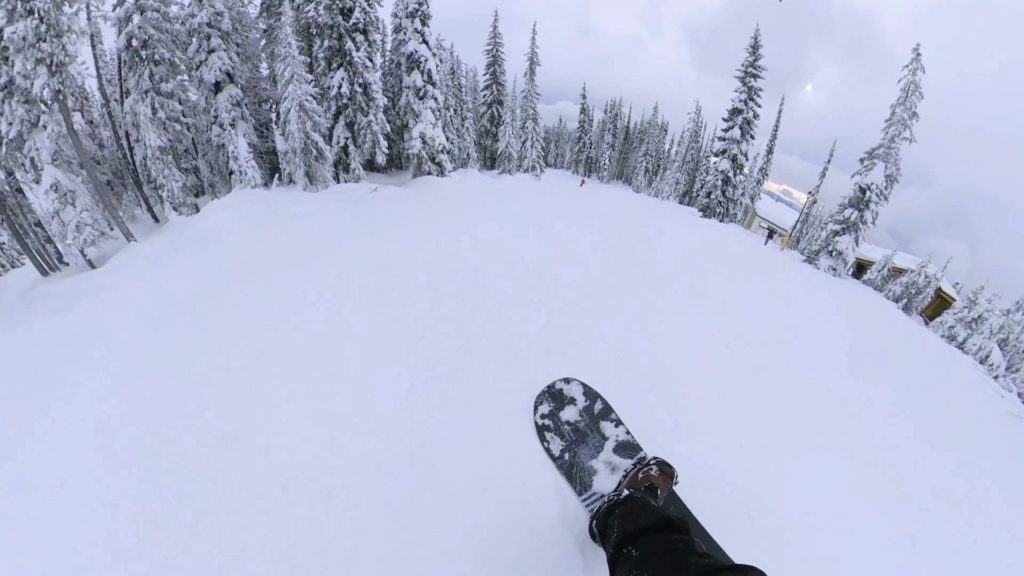
Speed
I rode a freshly waxed board, in fairly dry conditions, and I never had any problems keeping speed, the base seemed nice and fast, even on flat cat tracks.
As long as you are keeping your weight centered over the board, is has a very stable feel even when you are riding really fast.
Pros:
- Makes turning fun
- Built quality is great
Cons
- Almost no pop
- High price
Overall
Although it sounds like the Ripsaw is going to be a full on board to ride, you wouldn’t have to be an expert to get a lot from, if you are an intermediate rider looking to get better, it could be very helpful.
Turning on the Ripsaw is super fun, it grips hard, holds a strong edge through the whole turn without feeling like there is a weak or risky spot in the turn where you have to keep concentrating.
Like all Never Summer boards, the price is high, but there is a tradeoff that is comes with a very good build quality. Everything on the board is so nicely finished, and you get what you pay for.
If you were to flex it in the shop, it would seem that there should be plenty of pop in the tail, though it is the weakness of the hybrid profile with rocker between your feet that means you have to flex it so far just to get it to push back for an ollie.
If you just like to ride fast, carve and don’t want the catchier feel of traditional camber, then the Ripsaw could be a good choice.
[/tab]
[tab title=”Technical Specs”]
Never Summer Ripsaw 2020 Technical Specs
| Length | Effective Edge (mm) | Setback (mm) | Waist Width (mm) | Sidecut | Tip/Tail (cm) |
| 153 | 115 | 0 | 244 | Vario 705 | 29.0 |
| 156 | 117 | 0 | 252 | Vario 730 | 29.8 |
| 159 | 120 | 0 | 254 | Vario 790 | 30.0 |
| 162 | 123 | 0 | 257 | Vario 813 | 30.3 |
| 157x Wide | 118 | 0 | 260 | Vario 730 | 30.6 |
| 160x Wide | 120 | 0 | 264 | Vario 792 | 31.0 |
| 163x Wide | 121 | 0 | 266 | Vario 800 | 31.2 |
[/tab]
[tab title=”Previous Season Graphics”]
[row]
[column md=”6″]

2019
[/column]
[column md=”6″]
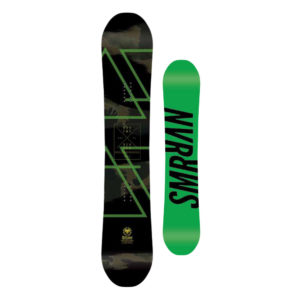
2018
[/column]
[/row]
[row]
[column md=”6″]
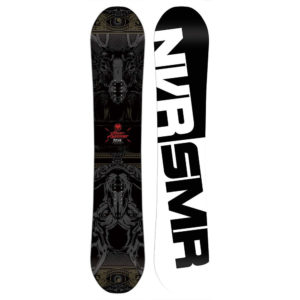
2017
[/column]
[column md=”6″]
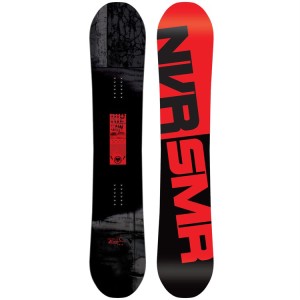
2016
[/column]
[/row]
[row]
[column md=”6″]
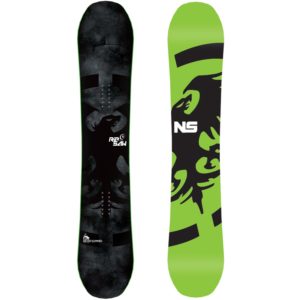
2015
[/column]
[column md=”6″]
[/column]
[/row]
[/tab]
[/tabs]
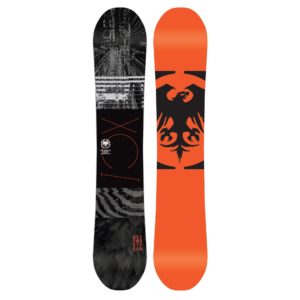
Find the best price on the Never Summer Ripsaw